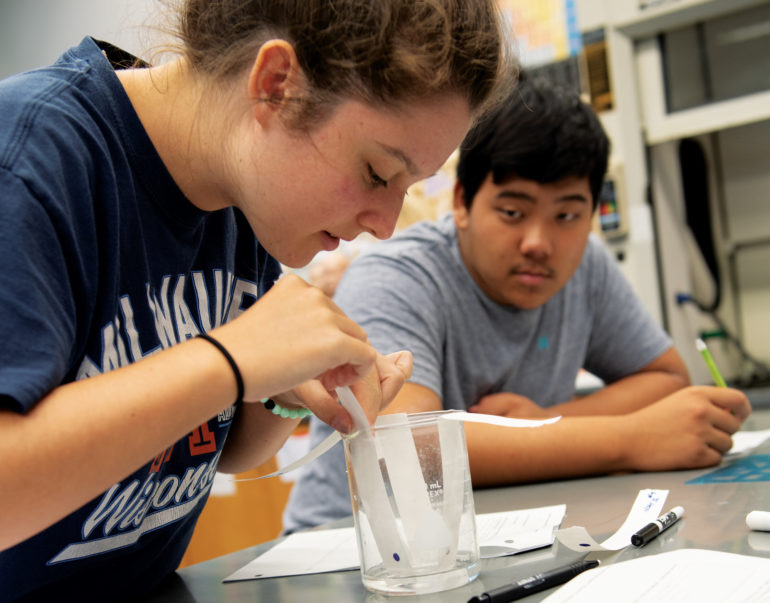Stellar SATs and a high GPA have long been considered the holy grail to get into the nation’s most elite universities, but an increasing number of colleges have been focusing more on skill sets and unique contributions than on a student’s ability to take tests.
More than 320 top-tier liberal arts colleges and research universities across the country have de-emphasized SAT scores in their admissions, and the number is likely to rise.
Leading SAT-optional schools include Hofstra University, Wesleyan University and Sarah Lawrence College. And last summer, the University of Chicago – considered one of the top national universities – grabbed headlines when it instituted a test-optional admissions policy.
David Hawkins, executive director of educational content and policy at the National Association for College Admission Counseling, said colleges and universities are aware that current admissions tests have shortcomings and have long been advocating new methods of conveying achievement and ability.
“College admissions professionals have chafed at a system of admission factors that has become calcified, with letter grades, grade point averages and standardized admission test scores comprising the static set of quantitative factors involved in making admissions decisions,” he said.
Higher education institutions are in the midst of redefining admissions processes to value things like critical thinking, creativity and grit, while high schools are simultaneously working to redesign the high school transcript to include those elements.
Punahou is among more than 225 elite private and public schools nation wide working as members of the Mastery Transcript Consortium to create a competency-based transcript that offers universities a more nuanced assessment of students’ skills and abilities.
Nearly 4 million U.S. high schoolers sit for the SAT or ACT every year. They file into rooms, pushing through reading, writing and mathematics exams. They’re as diverse as the country, from cities, suburbs and rural areas. They come from both high-income and inner-city communities; schools that stress the sciences or maybe the arts. Some are good at exams, while others have taken extensive prep courses. Regardless of their varied abilities and backgrounds, the test offers them a score.
But what does this score actually say about a student?
Dissatisfaction over the answer prompted the University of Chicago to make the SAT or ACT optional. The decision was a watershed moment for college admissions practices.
James Nondorf, vice president and dean of admissions at the university, said the decision recognizes that an SAT score doesn’t reflect the breadth of a student’s potential or chances for success.
“We want students to understand the application does not define you; you define the application,” he said.
Additional photo caption:
Top: Emma Peters ’21 and Matthew Matsuura ’21 are students in a chemistry class that is part of a pilot program of mastery learning.
More Stories on Mastery Learning
Mastery Learning
Why Consider Mastery Learning?
President’s Desk: A Focus on Mastery

